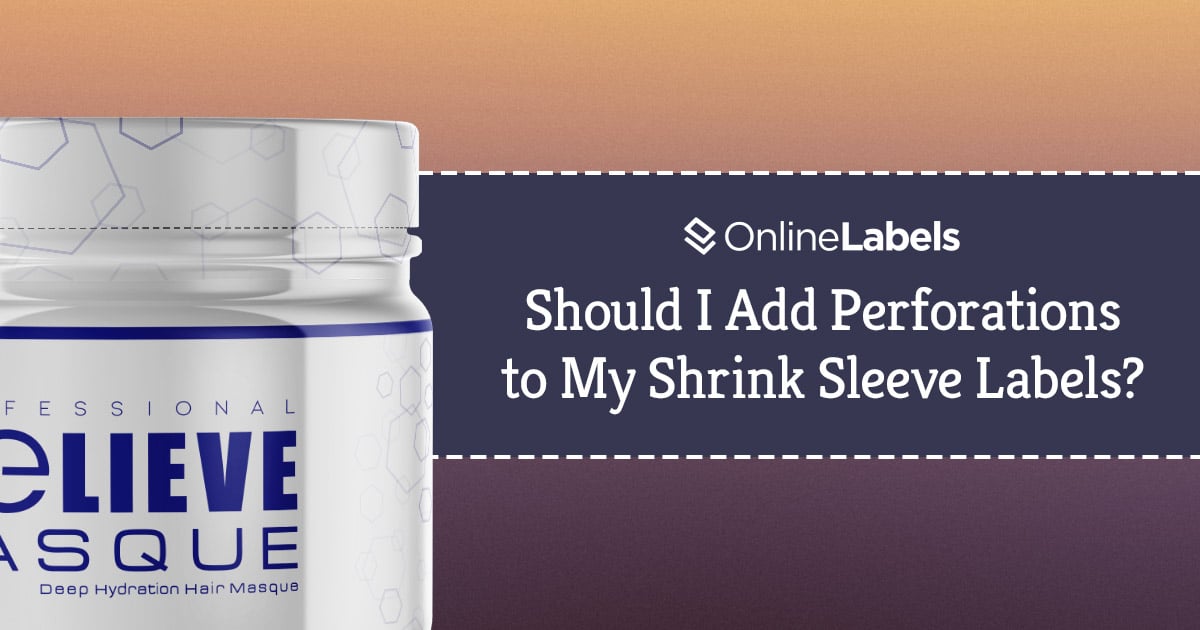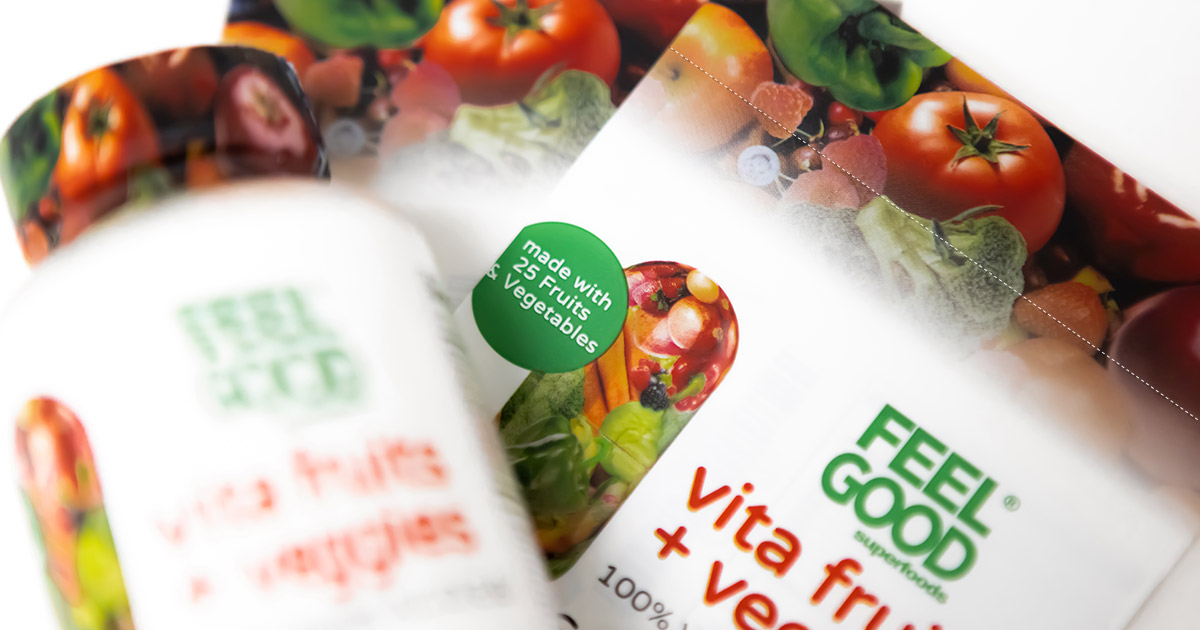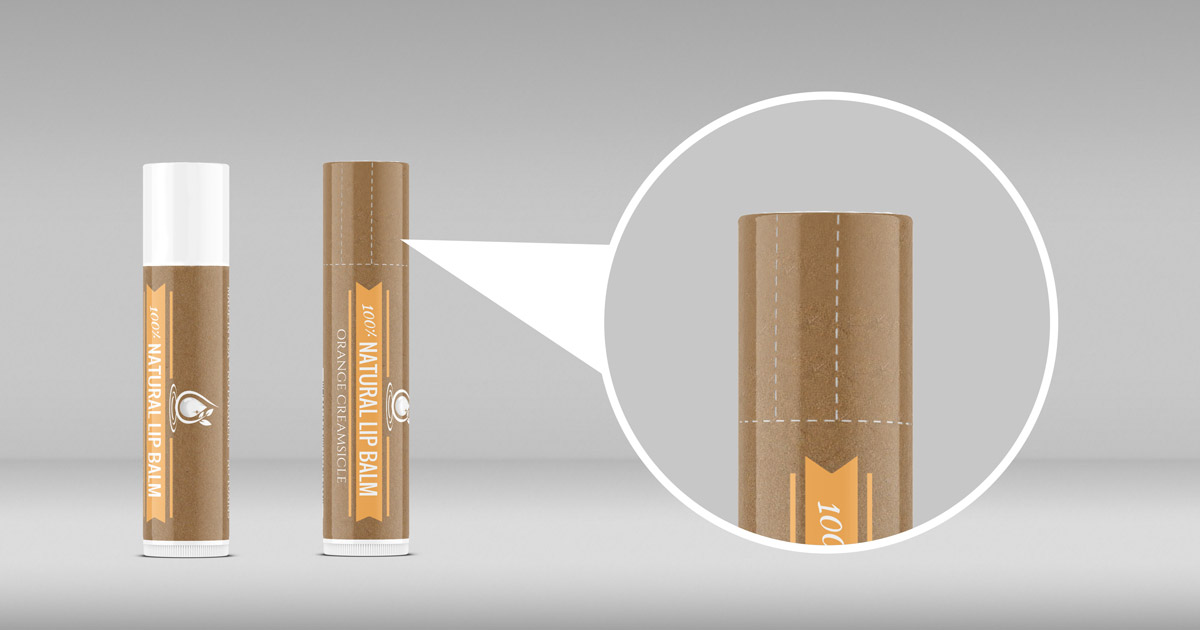Should I Add Perforations to My Shrink Sleeve Labels?

Over the years, shrink sleeve labels have exploded in popularity. They’re made of special heat-activated film that shrinks and conforms to the shape of the container.
Some of the many benefits of shrink sleeves include 360-degree coverage, versatility, and extreme durability. Another appeal to shrink sleeve labels is the ability to add perforations for easier opening and/or easier shrink sleeve removal.
What are perforations?
Perforations are very small holes or slits in the label that allow the consumer to easily tear open the package without the need for scissors or other tools, making them essential for neck bands and other styles of tamper-resistant labels. Without perforations or the use of another tool, shrink sleeves can be extremely difficult to tear.
Perforations have other uses besides easy access to contents of the container and tamper-evidence. Shrink sleeves must be removed before sending a container to recycling, so utilizing a perforation line down the length of the sleeve allows for easy removal of the entire sleeve to facilitate the process.
Now that we’ve touched on the practical uses of perforations, let's move onto the different types.

Types of Perforations
The three main types of shrink sleeve perforations are full vertical, horizontal/partial vertical, and venting.
Full Vertical
Full vertical perforations are a popular choice for tamper-evident labels and neckbands. The perforation goes the full length of the shrink sleeve or band, and allows the consumer to tear the entire sleeve off, or for the perforation to break when the product is opened.
This perforation is visibly damaged when the product has been opened, and is only available on roll-finished sleeves.
Horizontal and Partial Vertical
Horizontal, and sometimes partial vertical (also called a "T-Perf"), perforations are used for tamper-evidence purposes as well. In this case, the full body shrink sleeve will extend past the closure. When the consumer opens the container, they’ll need to remove the top portion (above the horizontal perforation), which exposes the cap or closure, and leaves the shrink sleeve on the body of the container intact.

T-perfs are only available in a sheeted format from our presses. You can also consult with your co-packer to find out more about in-line perforations during application of the sleeves.
Venting
Another way to utilize perforations is by making venting holes. This type of perforation isn’t for tamper-resistant purposes, but instead for utility. Venting holes allow air to escape from under the sleeve during the shrinking process on an extremely concave container, so the shrink sleeve can conform perfectly to indented areas.
This perforation typically looks like one or two holes, spaced apart, on each side of the label. Our team will only recommend this option if there is trouble with the shrink during testing.
Pros of Shrink Sleeve Perforations
Shrink sleeves perforations are popular (and continuing to grow in popularity) for a reason! Here are some of the benefits:
- Allow for easy removal of tamper-evident shrink sleeves or for easy opening of the product
- Can facilitate easier recycling as full body perforations make it a breeze to remove the shrink sleeve
- Help to prevent air bubbles under the shrink sleeve
- Perforation holes in shrink film allow items that purposefully emit a smell to reach the noses of consumers. This can be necessary for products that sell themselves based on the scent
Cons of Shrink Sleeve Perforations
Like with everything else, you need to count the costs and think through the potential drawbacks:
- Perforations can produce more waste during application if the shrink tunnel isn’t adjusted properly, which may cause warping in the perforation area if there’s uneven heat
- Too many perforations can produce wrinkled or sagging film
Whether done during the production of the sleeve, or inline as the sleeve is being applied to your product, perforations are often well-worth the extra cost, and sometimes even necessary. Since shrink sleeves are becoming more and more popular for product packaging, don’t neglect this valuable add-on for your products.
Want high-quality shrink sleeves for your products? Shop custom shrink sleeve labels today or fill out the form below to be connected with a sales representative.



